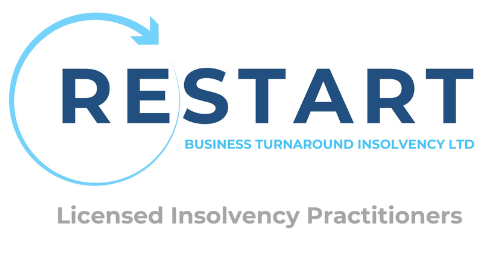
What Are the Disadvantages of Insolvency?
Facing insolvency can be a daunting process and it’s important that you understand the implications of entering into a formal insolvency process. Working with a licensed insolvency practitioner can take away some of the hassle and can help you create a plan to turn your business around. In this blog, we detail the potential drawbacks of insolvency and how you may be able to recover from it.
So what are the disadvantages of insolvency?
Businesses that enter an insolvency process may be impacted by loss of reputation and clients, personal stress and time loss, and an negative credit score.
Read on to find out more about the disadvantages of insolvency for your business.
How does Insolvency Impact Businesses?
Insolvency occurs when a business’ can’t pay back loans or debts before the agreed deadline. It can also mean that the business has more liabilities than assets. Once you are sure that your business is in one of these situations, you should seek the advice of a licensed insolvency practitioner who will be able to recommend a turnaround solution.
However, there are some disadvantages of insolvency that you should be aware of before you commit. These include:
Reputation
If your business files for insolvency, you are likely to lose the trust and relationships you have built with stakeholders and creditors. They can take action against your company in order to retrieve any debts owed via the court or issuing a statutory demand. Customers and clients may also lose faith in your business if they feel they won’t receive the services or products you provide. It is important to be as transparent as possible with all stakeholders during this time as secrecy could lead to greater consequences in the future for both the business and its owner.
Liquidation & Bankruptcy
If you are unable to rescue your company then the only other alternative is liquidation. Likewise if a sole trader cant rescue their business the only alternative is bankruptcy. Alternatively, creditors may choose to petition for the compulsory liquidation of your company or personal bankruptcy for sole traders.
Morale
Insolvency can be a long and stressful process that can have a great personal toll on the owner and employees. This can have a negative impact on the environment in the workplace and sometimes affect their personal lives.
Can You Recover From Insolvency?
Yes, a business can become solvent again by having a solid financial plan in place. This plan, also known as a Company Voluntary Arrangement, sets out clear deadlines of when the business will pay off any debts to creditors. For this plan to be successful, the business must carefully access finances to ensure that the debts can be paid off while being able to continue trading after the insolvency process.
A proposed Company Voluntary Arrangement must be agreed by at least 75% of creditors before the business can recommence trading. Should the proposal be rejected, the business is at high risk of being liquidated and shut down.
A CVA is a formal procedure and is a legally binding agreement between the business and its creditors. It sets out how repayments of company debt should be made to creditors and can deliver a better outcome than an administration or liquidation.
- When a business enters into a CVA, it is often seen as a sign of financial distress. This can lead to a negative impact on the company’s credit rating because it indicates that the company has had trouble meeting its financial obligations. This can cause issues with gaining credit from future suppliers.
- Secured creditors rights to enforce their security cannot be affected without their consent. `
- If your company is not going to change or be profitable, then a CVA is unlikely to help recover your business.
Insolvency Practitioners at Restart BTI
If you are looking to file your business for insolvency, hiring a licensed insolvency practitioner can take away some of the stress. Our experts can help you create a solid finance plan to hopefully turn your business around or support you in the next step of the process. Find out more by enquiring today.
FAQs
What is the Difference Between Insolvency and Bankruptcy?
Insolvency is often mistaken for bankruptcy. Insolvency can result in bankruptcy for a business if the proper steps are not followed to avoid it. Filing for bankruptcy is one way to resolve insolvency if after assessing your financial situation, you don’t see another solution.
What is the Difference Between Insolvency and Liquidation?
While in insolvency, creditors cannot simply petition to make the business bankrupt or liquidated. Liquidation is the compulsory legal ending of a company, which means the business can no longer trade or employ staff. There are multiple types of liquidation available for businesses including:
- Creditor’s Voluntary Liquidation (CVL) – A formal method of closing businesses which no longer make profit.
- Member’s Voluntary Liquidation (MVL) – A process that enables shareholders looking to leave a business to withdraw their capital in the most tax efficient manner.
- Compulsory liquidation – A formal insolvency procedure where a company is forced to close by a court order. This usually happens when a creditor petitions the court, asserting that the company cannot pay its debts
What is the Difference Between Insolvency and Administration?
Although administration is an insolvency procedure, there are slight differences. Administration is one method of resolving insolvency for a company, with the goal being to return the business to normal trading and profit.

Established in 2018, the directors at Restart BTi have over 50 years of experience to assist companies, business owners and individuals with expert advice and tailored solutions when facing financial difficulties.
